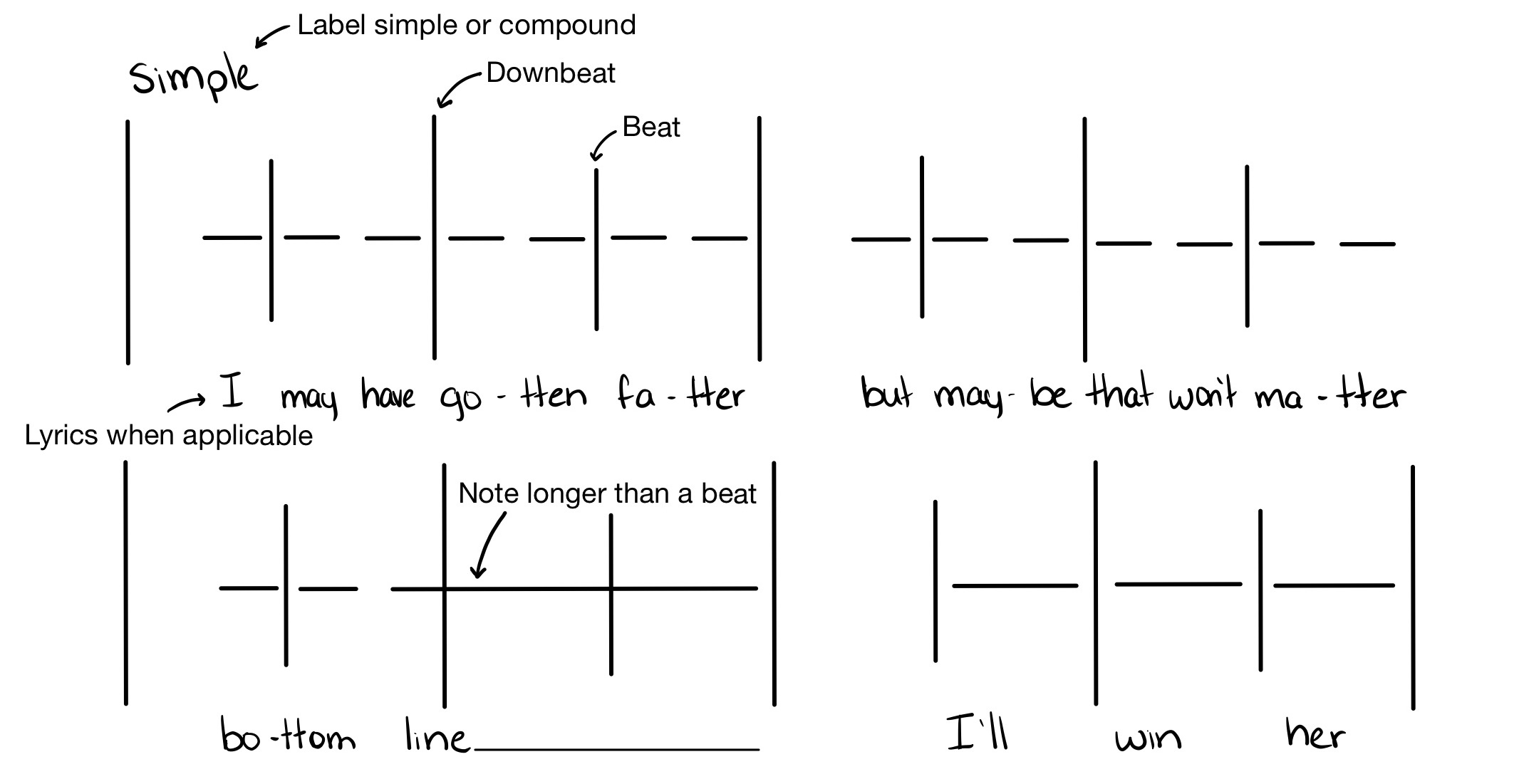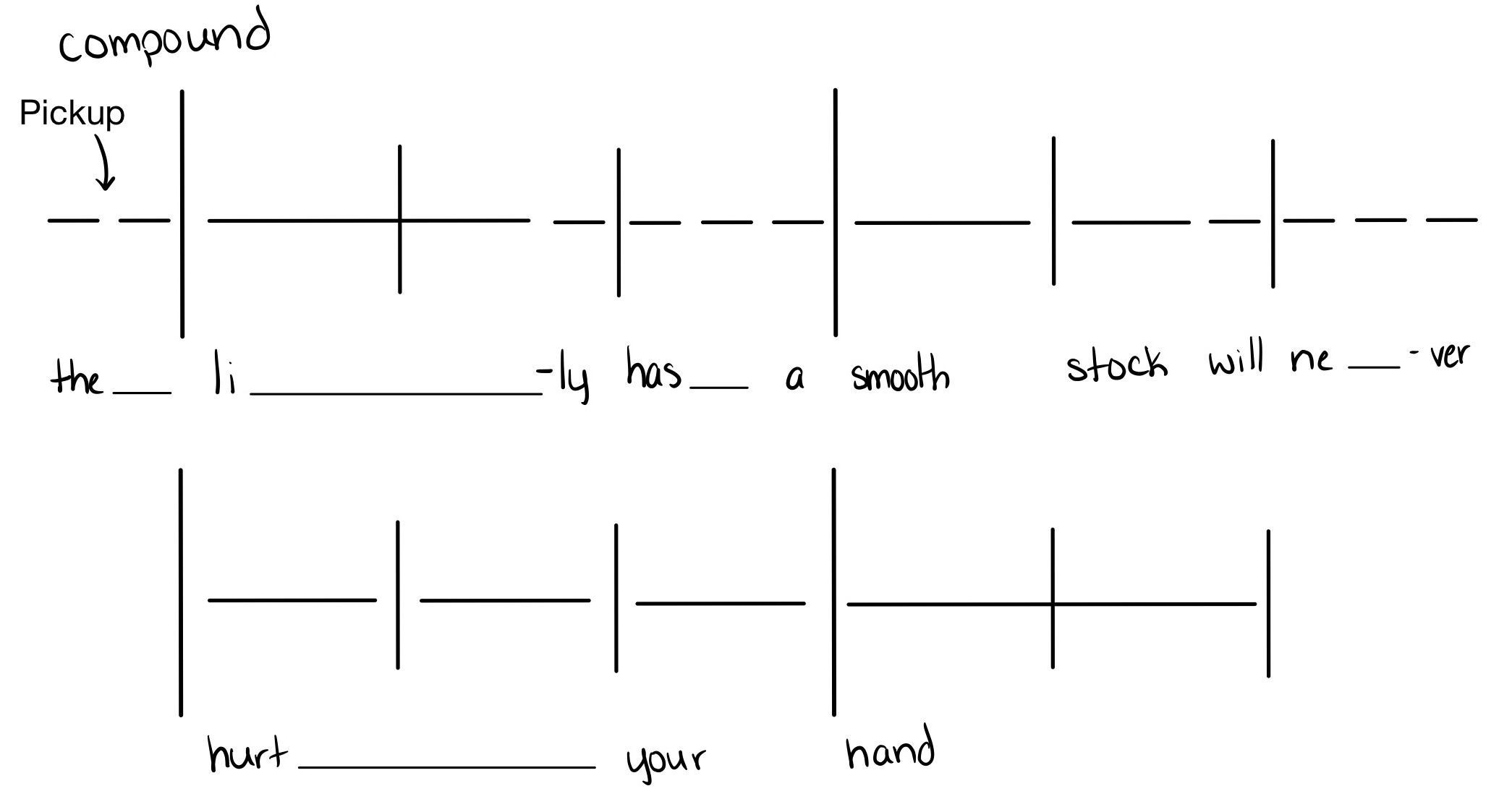Rhythm and Meter Through Protonotation
As we work on rhythms, our primary focus will be on the relationships between rhythm and meter. People use these terms in different ways. For our purposes, “rhythm” refers to the concrete events we hear in the music: when they start, and how long they last. “Meter,” on the other hand, refers to beats, measures, and beat divisions.
To focus our attention on the relationships between rhythm and meter, one of our primary ways of communicating about rhythms will be a system called “protonotation,” developed by pedagogue Gary Karpinski.
In protonotation, every beat is represented by a short vertical line. Every downbeat is represented by a longer vertical line. Be sure that you have a vertical line for every beat that you hear, and that you don’t start with a longer vertical line unless the music starts on a downbeat. Finally, since this system doesn’t typically represent beat divisions, we will write either “simple” or “compound” up above the metric grid.
There are two examples below. As you listen to each example, follow the protonotation and observe how it tracks beats and measures. It may help to tap, count, or conduct along to the beats.
Protonotation Example: Simple Meter
Protonotation:

Protonotation Example: Compound Meter
*the melody in this example starts at 0:19
Protonotation:

You may also find the instructional video here helpful.
While protonotation is useful for communicating about rhythm, we’ll use it especially to write down what we hear. To do so, start by figuring out the meter, including whether or not the rhythm starts on a downbeat, and setting up the vertical lines of the notation. Then either listen again to the music or play it back in your head while tracking your vertical lines (as beats). Fill in the actual notes as horizontal lines.
At first, you should pay special attention to each beat. Determining whether a given note comes before, at, or after a beat is particularly important. Once this is comfortable, you may wish to use subdivision—described in the next section—to figure out exactly what is going on within each beat.
Activity: Practice protonotation of rhythm
Goal: Determine how rhythms relate to meter, and represent your understanding through protonotation.
Instructions: The following two playlists are taken from future sections on basic simple and compound meter rhythmic cells. Choose a song from one of the playlists, listen to the first phrase of melody, determine its meter, and represent it in rhythmic protonotation.

